The path to franchise success in the NFL has always been the draft, and picking great players remains essential to building a winner. So we were curious: Which draft provided each NFL team with its best haul of talent?
To find each team's best draft class ever, first we had to define "best." Fortunately, there's Pro Football Reference's Approximate Value (AV) metric. AV is a composite measure of a player's value to his team, based roughly on game appearances, game starts and awards such as Pro Bowl and All-Pro selections. Meaningful individual stats also help determine a player's AV, and the metric is boosted for players who are members of winning teams.
There have been 50 NFL drafts in what is known as the common draft era (since 1967), and we limited our rankings to this period. We added the AV for every pick in every class while with that team. Two other key caveats:
1. Before the era of unrestricted free agency began in 1992, teams had greater ability to keep players under team control, allowing more value to accrue to drafting teams for the purposes of this exercise.
2. The draft was 17 rounds from 1967 to 1976, and later moved to 12 rounds before being reduced to its current seven-round iteration in 1994. That matters, because our methodology definitely favors depth of class -- the more players in a class, the more possibilities for AV-related success -- and we think that's the best reflection of the impact that can be generated by a single NFL draft class. Smaller classes including one or two stars can make an impact, too, but history confirms that it's the higher-volume classes that more frequently help fuel enduring team success.

1. 1975 Dallas Cowboys (551 AV)
The Cowboys' class of 1975 proved the most productive draft class of any team in the common draft era. The group was known as "The Dirty Dozen," because 11 picks and one undrafted player made the final roster, headlined by Hall of Fame defensive tackle Randy White, the second overall pick in '75. Five members of the class became Pro Bowlers: White, linebackers Thomas "Hollywood" Henderson and Bob Breunig, tackle Pat Donovan and guard Herbert Scott. And five started the Cowboys' Super Bowl XII win over the Denver Broncos following the 1977 season.
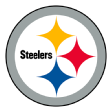
2. 1971 Pittsburgh Steelers (526 AV)
The Steelers' 1974 draft class is often considered the best in NFL history for producing four Hall of Famers, twice as many as any class. But their 1971 class was deeper and might deserve more credit for propelling Pittsburgh to four Super Bowl titles in the 1970s. The class produced eight Super Bowl starters, including Hall of Fame LB Jack Ham (second round) and two-time Pro Bowl selections in defensive end Dwight White (fourth round) and strong safety Mike Wagner (11th round).
The 1974 Steelers class (including Hall of Famers Jack Lambert, Lynn Swann, John Stallworth and Mike Webster) would rank right behind the '71 class as the Steelers' best and would rank tied for third-best of any team (486). If you want to say '74 was better than '71, we won't argue.
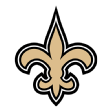
3. 1981 New Orleans Saints (486 AV)
This class featured the No. 1 overall pick, Heisman Trophy-winning RB George Rogers, who ran for 1,674 yards as a rookie, Hall of Fame linebacker Rickey Jackson and other key contributors such as Pro Bowl tight end Hoby Brenner (third round) and defensive tackle Jim Wilks (12th round). The Saints' 1981 selectees might be the best draft class to never see postseason success. Though Jackson, Brenner and Wilks were among those who lasted long enough in New Orleans to see the Saints' string of playoff appearances from 1990 through 1992, the team never made it out of the wild-card round.
The 17-player class was the most productive in Saints history, but the 2006 class deserves an honorable mention. It was easily the most productive of class by any team since 2000, featuring RB Reggie Bush, S Roman Harper, G Jahri Evans and two seventh-rounders who played nearly 150 games with the Saints (G Zach Strief and WR Marques Colston). The signing of Drew Brees that year gets much of the credit for the team's Super Bowl win, but New Orleans' 2006 draft class shouldn't be overlooked.
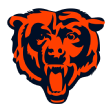
4. 1975 Chicago Bears (473 AV)
This very deep class is headlined by one of the greatest running backs in NFL history, Walter Payton, who would carry the Bears' Super Bowl XX offense a decade later. Defensive end Mike Hartenstine was the other standout from this class. He played for 13 seasons and had eight starts for the '85 championship defense.
The 1965 class was before the common draft era, but it featured Hall of Famers Gale Sayers and Dick Butkus, who were picked Nos. 3 and No. 4 overall, respectively. But even if we included this group, its 347 AV pales in comparison with the '75 Bears class because of Sayers' and Butkus' relatively short careers.
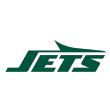
5. 1977 New York Jets (435 AV)
This Jets class immediately followed Joe Namath's final season with the team and helped New York reach four postseasons in a six-year span, from 1981-86. The class featured tackle Marvin Powell (first round), wide receiver Wesley Walker (second round), and fan favorite/defensive tackle Joe Klecko (sixth round), an important piece of the famed "New York Sack Exchange."
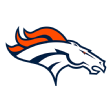
6. 1973 Denver Broncos (406 AV)
The Broncos did not have a single winning season in their first 13 seasons, before the 1973 class marked the turning point in the franchise's fortunes, helping them reach the Super Bowl by the 1977 season. They hit on four of their first five picks in '73, including RB Otis Armstrong, who led the NFL in rushing in 1974, and LB Tom Jackson, who anchored the "Orange Crush" defense.
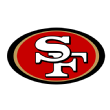
7. 1986 San Francisco 49ers (402 AV)
The 49ers' 1986 class might have been the deepest in history, featuring six players who played at least 100 games with San Francisco, including Hall of Famer DE Charles Haley; WR John Taylor, who caught the game-winning TD in the final seconds of Super Bowl XXIII; and Tom Rathman, a longtime backfield staple. This class provided a total of 53 seasons worth of players who would serve as primary starters.
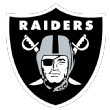
8. 1968 Oakland Raiders (401 AV)
Hall of Famers Ken Stabler (second round) and Art Shell (third round) headlined Oakland's 1968 class, which would eventually lead the Raiders to their first Super Bowl title. Interestingly, the Raiders' first-round pick, Eldridge Dickey, provided almost no AV to Oakland. Dickey was drafted as a QB but moved to wideout when Stabler controversially won the starting job in training camp. Dickey would register only five catches in his NFL career.

9. 1985 Buffalo Bills (391 AV)
In 1985 the Bills drafted Bruce Smith, who went on to become the NFL's all-time sack leader in a Hall of Fame career, and WR Andre Reed, who also made the Hall of Fame. Both were important pieces of the team that won four straight AFC Championships. The NFL had competition from the USFL during this era, and Bills general manager Bill Polian had to convince Smith, the No. 1 overall pick, to play for the Bills instead of the USFL's Baltimore Stars.
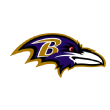
10. 1996 Baltimore Ravens (384 AV)
The best draft in the Ravens' brief history was their very first. (In fact, the team was still known as the "Baltimore NFL Franchise" at the time of the '96 draft, having yet to choose a nickname after being prevented from using the Browns moniker). The first two picks in team history were Hall of Fame tackle Jonathan Ogden and Ray Lewis, a virtual certainty to be selected to the Hall on his first ballot. Lewis was the heart and soul of the team through 17 seasons, which included nine playoff berths and two Super Bowl championships. Return specialist Jermaine Lewis was another key member of Baltimore's '96 class.
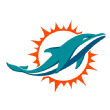
11. 1983 Miami Dolphins (380 AV)
The 1983 draft provided more AV to the league as a whole than any other, and the Dolphins got the lion's share that year. Miami chose franchise QB Dan Marino in the first round and picked up WR Mark Clayton in the eighth, not to mention longtime punter Reggie Roby in the sixth. Marino and Clayton never won a championship but led their team to five playoff berths together.
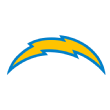
12. 1975 San Diego Chargers (378 AV)
The Chargers made a whopping 24 picks in 1975, and went nearly all defense. They had four of the first 33 selections, and used three of them to draft three defensive linemen: Hall of Famer Fred Dean, Gary Johnson and Louie Kelcher, who formed "The Bruise Brothers," one of the most dominant lines in football during their era.
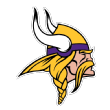
13. 1967 Minnesota Vikings (365 AV)
Hall of Fame defensive tackle and NFL MVP Alan Page, selected with the 15th overall pick in '67, anchored the "Purple People Eaters" defense that led Minnesota to four NFC championships. Two-time Pro Bowl defensive back Bobby Bryant (seventh round) was another key part of the Vikings' legendary defense, and two-time Pro Bowl wide receivers Gene Washington (first round) and Bob Grim (second round) were also selected that year.

14. 1981 Washington Redskins (341 AV)
The Redskins' first two picks were guards Mark May (first round) and Hall of Famer Russ Grimm (third round), part of the famous offensive line group affectionately known as "The Hogs." They also used their fifth-round pick on DE Dexter Manley, who remains the Redskins' all-time sack leader, and their eighth-round pick on wide receiver Charlie Brown. This draft helped Washington win a Super Bowl the following season, and players from this class remained with the Redskins through 1991 and two other championship seasons.
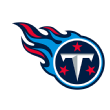
15. 1983 Houston Oilers (337 AV)
Hall of Fame guard Bruce Matthews was the overwhelming standout pick of the then-Oilers' 1983 class. The first-round pick played an incredible 19 seasons with the Oilers/Titans franchise, making 14 Pro Bowls. DBs Keith Bostic (second round) and Steve Brown (third round) were other high-value contributors from this class for Houston.
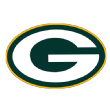
16. 1978 Green Bay Packers (320 AV)
Hall of Fame WR James Lofton (first round) headlined this class, but linebackers John Anderson (first round) and Mike Douglass (fifth round) were also solid picks. The 2005 Packers class is currently a distant third among Green Bay draft classes, and it's still accumulating AV, thanks to Aaron Rodgers. But Rodgers would have to duplicate his career to date to help his group catch the much deeper '78 Packer class.
Undoubtedly, there are some pre-common era drafts that would rival '78. The 1958 class could be the best Packers class ever, with Hall of Famers Jim Taylor and Ray Nitschke helping to form the foundation of the Packers 1960s dynasty.
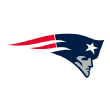
17. 1973 New England Patriots (315 AV)
Hall of Fame guard John Hannah highlighted this deep Patriots class. In fact, Hannah has the most AV of any drafted Patriots player other than Tom Brady. Running back Sam Cunningham followed Hannah as the second of three Pats first-rounders in the '73 class, the third being wideout Darryl Stingley, whose career was tragically cut short when he was paralyzed in a preseason game in 1978.
Brady's class of 2000 would need him to play another six or seven years for it to surpass the AV of the '73 group.
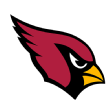
18. 2004 Arizona Cardinals (307 AV)
Larry Fitzgerald (first round), Karlos Dansby (second round) and Darnell Dockett (third round) were the Cardinals' first three picks in 2004. Thirteen years later, the class still has three players in the league: Fitzgerald, Dansby and defensive end Antonio Smith (fifth round).
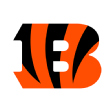
19. 1977 Cincinnati Bengals (307 AV)
The Bengals' 1977 draft class helped form the core of the team that made the franchise's first Super Bowl appearance in the 1981 season. Of the team's 19 selections, 16 made the roster, including one-time Bengals single-season sacks leader Eddie Edwards (first round) and tackle Mike Wilson (fourth round), who never missed a game in his eight seasons with Cincinnati.
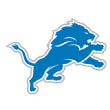
20. 1967 Detroit Lions (304 AV)
The Lions' 1967 class featured RB Mel Farr (first round) and Hall of Fame defensive back Lem Barney (second round), who are still the only teammates to win offensive and defensive rookie of the year honors in the same season.
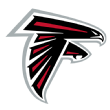
21. 2008 Atlanta Falcons (303 AV)
Matt Ryan (first round) led a deep 2008 Falcons class that also included tackle Sam Baker (first round), linebacker Curtis Lofton (second round), wide receiver Harry Douglas (third round), safety Thomas DeCoud (third round) and linebacker Kroy Biermann (fifth round). Ryan will probably generate several more seasons of strong AV, propelling the '08 Falcons several ranks higher on this list.

22. 1971 Los Angeles Rams (303 AV)
The Rams drafted Hall of Fame defensive end Jack Youngblood and six-time Pro Bowl linebacker Isiah Robertson with their two first-round picks in 1971. Youngblood replaced legend Deacon Jones, and the defensive duo helped the Rams win seven straight division titles, then an NFL record.

23. 1995 Tampa Bay Buccaneers (301 AV)
The Buccaneers drafted Hall of Famers Warren Sapp (No. 12 overall pick) and Derrick Brooks (No. 28 overall) with its two first-round picks. Together, they were the core of the historically great Bucs defense that led the franchise to its lone Super Bowl in 2002. This was a top-heavy draft class; the six other picks for Tampa that year combined to play just three seasons with the Buccaneers.
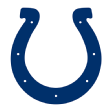
24. 2001 Indianapolis Colts (300 AV)
Reggie Wayne (first round) highlighted a 2001 class that also included tackle Ryan Diem (fourth round), who started for 11 seasons in Indianapolis. Hard as it might be to believe, this class outproduced the 1998 Peyton Manning class in terms of AV, because the next-best player in '98 was center Steve McKinney, who started for four seasons in Indy.
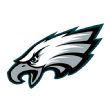
25. 1973 Philadelphia Eagles (297 AV)
The Eagles' top four draft picks from 1973 all played 150-plus games with the Eagles and laid the foundation for the 1980 Super Bowl run. That class included tackle Jerry Sisemore (first round), tight end Charle Young (first round), center Guy Morriss (second round) and safety Randy Logan (third round).

26. 1993 New York Giants (293 AV)
The Giants selected Hall of Fame defensive end Michael Strahan (second round) and five-time Pro-Bowl linebacker Jessie Armstead (eighth round) among their seven picks in the 1993 draft.
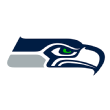
27. 1990 Seattle Seahawks (287 AV)
Hall of Fame defensive tackle Cortez Kennedy (first round) and three-time Pro Bowl running back Chris Warren (fourth round) headlined this class, which won't stand for long as the Seahawks' best. Seattle's three drafts from 2010-12 are the three best drafts by any team in the NFL since 2010. The 2012 class is still rolling, with production from quarterback Russell Wilson and linebacker Bobby Wagner.

28. 1984 Kansas City Chiefs (283 AV)
Tackle John Alt (first round) and defensive back Kevin Ross (seventh round) were among the best Chiefs ever at their positions, while nose tackle Bill Maas (1st round) was another excellent player in Kansas City for several seasons. Each of those three players made two Pro Bowls and combined for 31 seasons as starters at their positions.
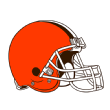
29. 1967 Cleveland Browns (267 AV)
Not a lot of household names here -- final pick Ben Davis (17th round) was the only member of the class to make a Pro Bowl -- but the players Cleveland drafted in '67 combined to play more than 1,000 career games in the NFL. This class ranks among the franchise's best, because there were seven significant AV contributors.
Although they're before the common draft era, the Browns' 1957 and 1964 classes would rank among the best in franchise history. The '57 class included Hall of Famers Jim Brown and Gene Hickerson, and the '64 class had RB Leroy Kelly and WR Paul Warfield.

30. 2001 Carolina Panthers (224 AV)
The Panthers took LB Dan Morgan (first round), DT Kris Jenkins (second round), and WR Steve Smith (third round) with their first three picks in 2001. Along with 2002 No. 1 pick Julius Peppers, they helped lead Carolina to its first Super Bowl appearance in the 2003 season.

31. 2006 Houston Texans (190 AV)
The relatively young Texans franchise had its best draft in 2006. That year, they chose defensive end Mario Williams with the No. 1 overall pick, along with linebacker DeMeco Ryans (second round), tackle Eric Winston (third round) and tight end Owen Daniels (fourth round).
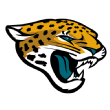
32. 1998 Jacksonville Jaguars (188 AV)
The Jaguars landed running back Fred Taylor and hard-hitting safety Donovin Darius in the first round of 1998. Taylor rushed for 11,271 career yards in Jacksonville and was the cornerstone of a memorable offensive attack. Time will tell if the Jags' 2014 class (QB Blake Bortles, WR Allen Robinson, WR Marqise Lee and LB Telvin Smith) can threaten 1998 for the franchise's top class.
For more from ESPN Analytics, visit the ESPN Analytics Index.
